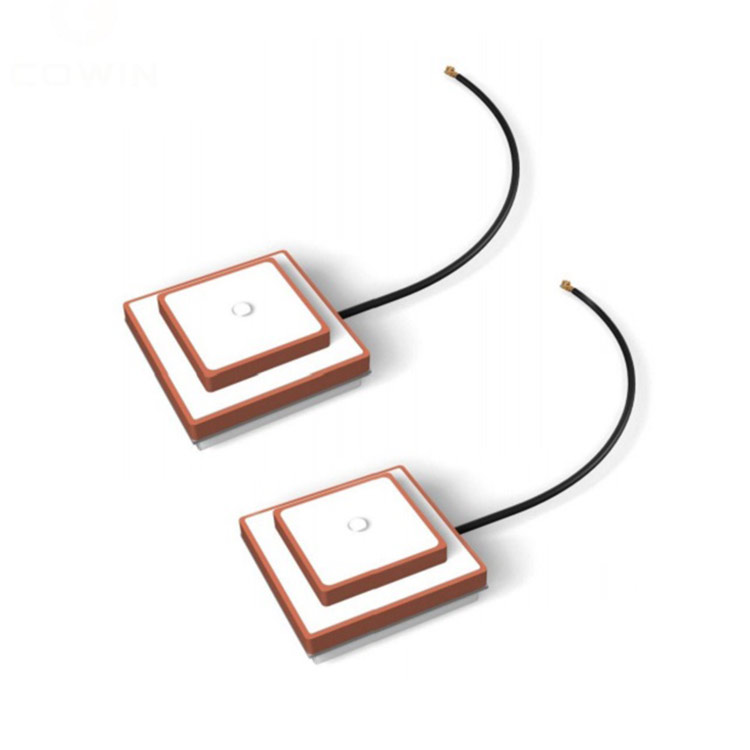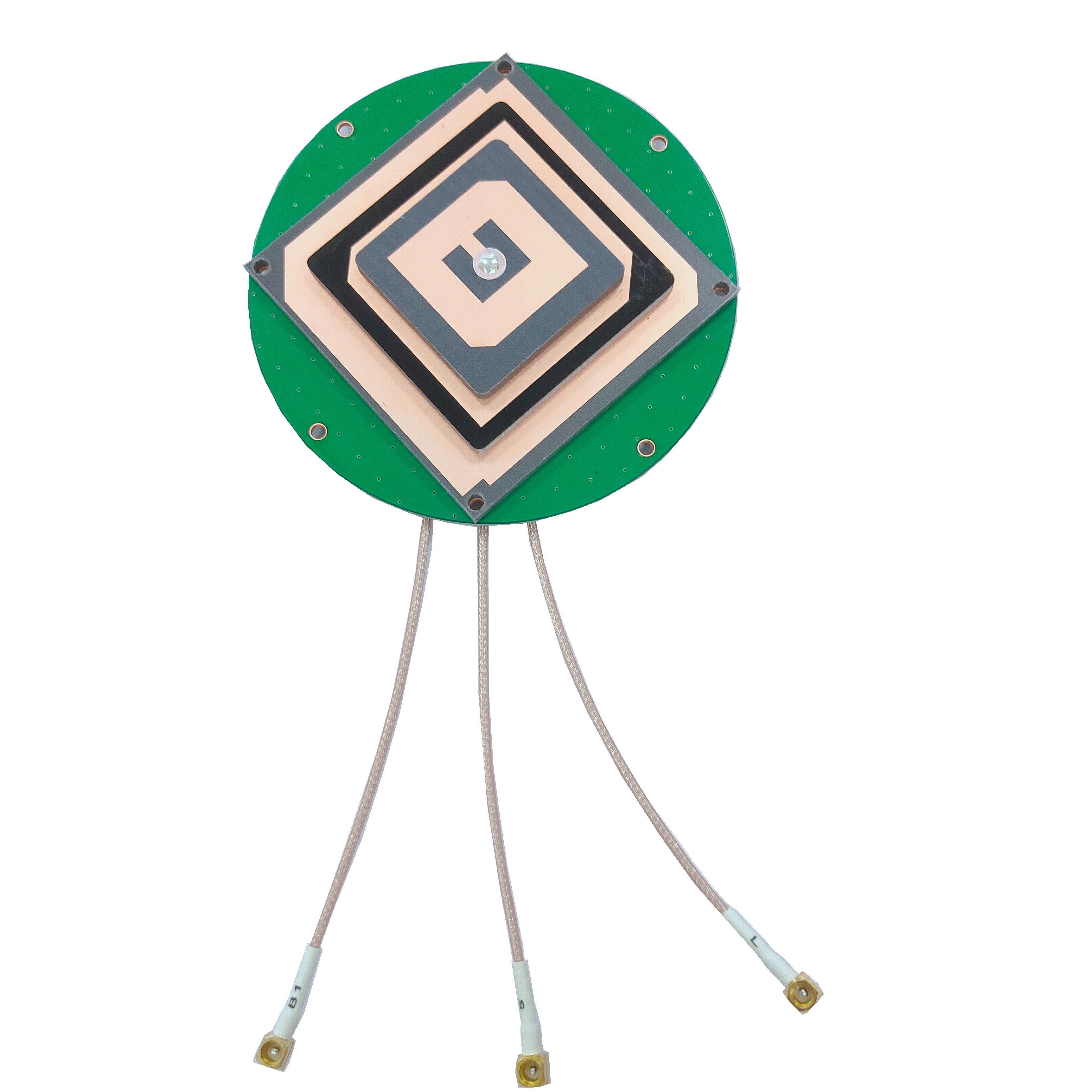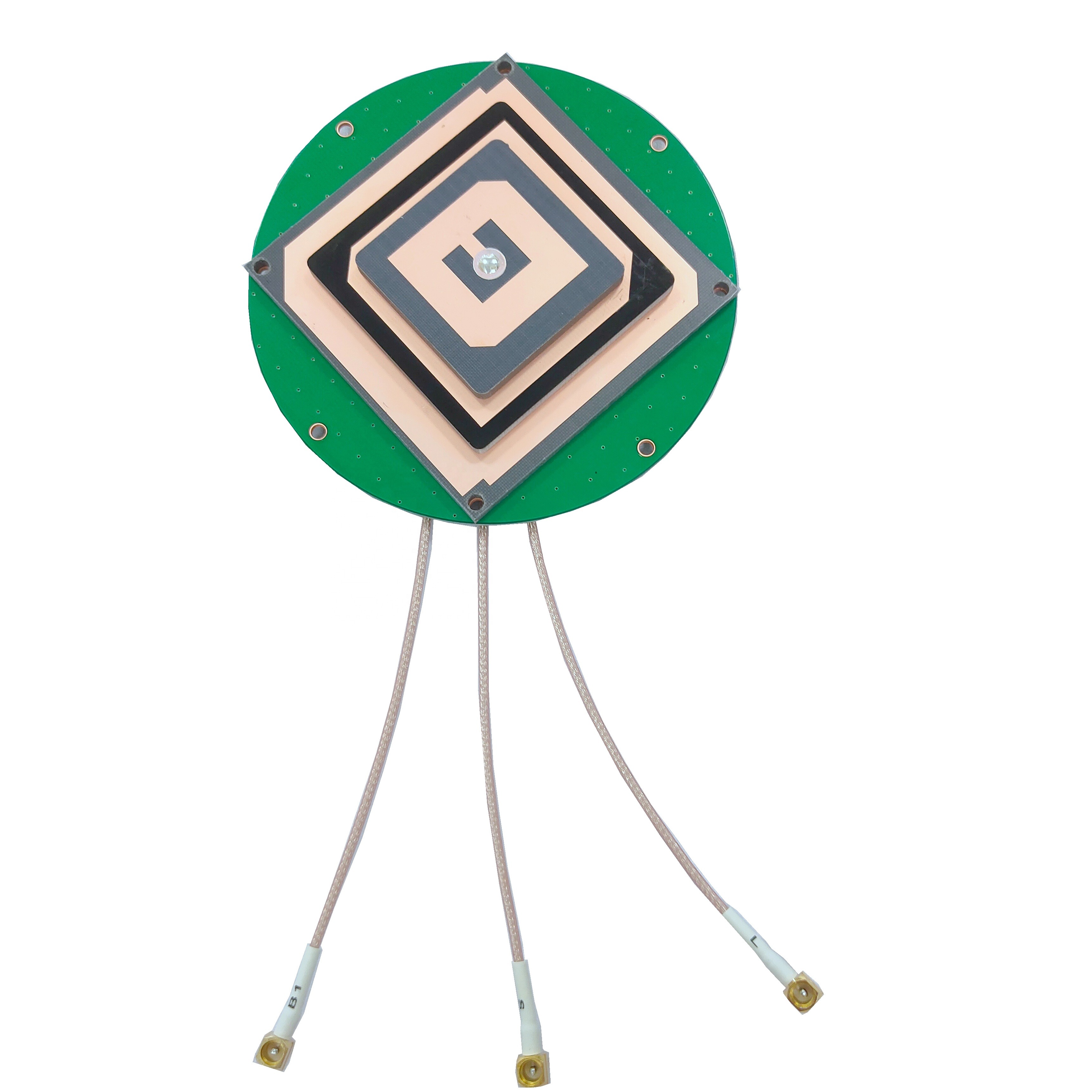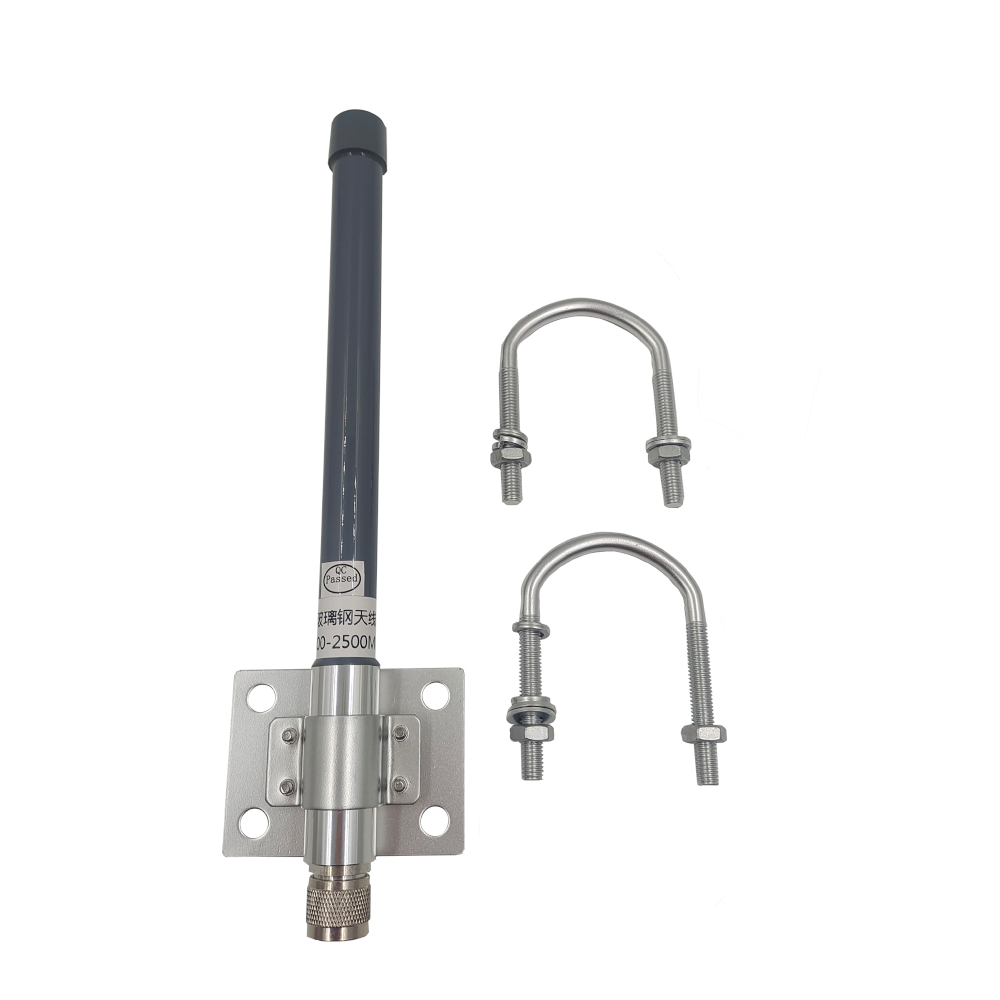forefront of its design
At the forefront of its design is the support for a wide range of coaxial connectors: SMA, MCX, MMCX, HRS, and IPX. This diversity ensures compatibility with virtually any embedded device, regardless of its interface specifications. SMA connectors, known for their ruggedness and secure threaded coupling, are ideal for industrial sensors and ruggedized IoT devices where vibration resistance is critical. MCX and MMCX connectors, smaller in size, cater to compact devices like smartwatches and portable navigation units, where space is at a premium. HRS (Hirose) connectors, with their high-reliability design, are favored in automotive and medical applications where consistent performance is non-negotiable. IPX (also known as U.FL) connectors, the smallest in the lineup, are perfect for ultra-compact devices such as fitness trackers and miniaturized IoT modules. This versatility in connectivity eliminates the need for custom adapters, simplifying integration and reducing the risk of signal loss due to mismatched interfaces. For manufacturers, this means greater flexibility in device design, as the antenna can be paired with a wide range of receivers without redesigning the connection hardware.
The antenna’s gain of 5 dBi strikes a critical balance between performance and size, making it ideal for embedded applications. Gain, measured in dBi (decibels relative to an isotropic radiator), indicates the antenna’s ability to focus signal energy in a specific direction. A 5 dBi gain is sufficient to capture weak GNSS signals while maintaining a compact form factor—essential for devices where internal space is limited. This gain level is achieved through a combination of optimized radiating element design and efficient use of the antenna’s internal volume, ensuring that even in crowded device enclosures, the antenna can still receive signals from overhead satellites. Unlike higher-gain antennas, which often require larger dimensions or directional radiation patterns, this 5 dBi design remains omnidirectional enough to track satellites as the device moves, making it suitable for handheld and mobile applications. For example, in a smartwatch, the antenna’s gain ensures that the device can maintain a GPS lock even when worn on the wrist, where the user’s body may partially obstruct the signal.
The frequency range of 1575 MHz, 1616 MHz, and 2491 MHz positions the antenna to support a variety of satellite constellations and auxiliary services, enhancing its versatility. The 1575 MHz frequency corresponds to GPS L1, the primary civilian band for the Global Positioning System, ensuring compatibility with the most widely used navigation network. 1616 MHz is part of the Iridium satellite band, enabling the antenna to support satellite communication services in addition to positioning—valuable for devices used in remote areas where cellular connectivity is unavailable. The 2491 MHz frequency is associated with BeiDou B3, a band used by China’s satellite navigation system for high-precision applications, further expanding the antenna’s global coverage. By supporting these three frequencies, the antenna can switch between constellations based on availability, ensuring reliable positioning in diverse geographic regions. For instance, in urban areas where GPS signals may be weak, the antenna can rely on BeiDou B3, while in remote locations, it can leverage Iridium for both positioning and communication.
A range of coaxial cable options—RF1.78, RF1.37, RF1.13, and RF0.81—further enhances the antenna’s adaptability to different embedded environments. These cables vary in diameter, with RF0.81 being the smallest and RF1.78 the largest, allowing manufacturers to choose the optimal balance between flexibility and signal integrity. RF0.81, with its ultra-thin design, is ideal for devices like smart glasses or hearing aids, where even minimal cable bulk can disrupt the user experience. RF1.13 and RF1.37 strike a balance between size and durability, suitable for smartphones and portable medical devices. RF1.78, with its thicker shielding, is preferred for industrial sensors and automotive embedded systems, where resistance to electromagnetic interference (EMI) is critical. All these cables are designed to minimize signal loss over short distances (typical in embedded applications), ensuring that the weak GNSS signals captured by the antenna are transmitted to the receiver with minimal degradation. The choice of cable also affects the antenna’s routing within the device, with thinner cables offering greater flexibility to navigate around other components like batteries and circuit boards.
antenna’s compact dimensions
The antenna’s compact dimensions of 90*13.5 mm make it suitable for integration into even the smallest devices. This slim profile allows it to be mounted on circuit boards, behind displays, or within the casing of wearables without adding significant bulk. The 90 mm length ensures that the radiating element has sufficient space to resonate at the target frequencies, while the 13.5 mm width allows for easy placement alongside other components. This compact design is particularly valuable in the consumer electronics sector, where devices are becoming increasingly miniaturized. For example, in a fitness tracker, the antenna can be embedded in the band or the main body without compromising the device’s sleek design or user comfort. In industrial sensors, the small size allows the antenna to be integrated into the sensor housing, protecting it from environmental hazards while maintaining a low profile.
Support for both right-hand circular polarization (RHCP) and linear polarization adds another layer of versatility, allowing the antenna to adapt to different application requirements. RHCP is ideal for GNSS applications where signals may reflect off surfaces (such as buildings or terrain), as it minimizes polarization mismatch and reduces multipath interference. This makes it suitable for devices used in urban or rugged environments, such as smartphone navigation or outdoor wearables. Linear polarization, on the other hand, offers higher efficiency in controlled environments where the antenna’s orientation is fixed, such as industrial sensors mounted in a specific position. By offering both options, manufacturers can select the polarization that best suits their device’s use case, ensuring optimal performance in the target environment.
A VSWR (Voltage Standing Wave Ratio) of 1.5 is a key indicator of the antenna’s efficiency, ensuring that the majority of signal power is transferred between the antenna and the receiver. VSWR measures the mismatch between the antenna’s impedance and the connected cable/receiver, with a lower ratio indicating better matching. A VSWR of 1.5 means that over 96% of the signal power is transferred, with minimal reflection—critical for embedded applications where signal strength is often limited by the device’s enclosure. This high efficiency ensures that even weak signals from low-elevation satellites are captured and transmitted effectively, reducing the risk of positioning errors. For example, in a smartphone with a metal casing that attenuates GNSS signals, the low VSWR ensures that the remaining signal is used efficiently, maintaining a stable GPS lock.
The antenna’s input impedance of 50 ohms aligns with industry standards for RF components, ensuring compatibility with most GNSS receivers and coaxial cables. This impedance matching is essential for maximizing power transfer and minimizing signal reflection, which can cause interference and reduce performance. By adhering to the 50-ohm standard, the antenna can be easily integrated into existing device designs without the need for additional matching networks, simplifying the manufacturing process and reducing costs. This compatibility is particularly valuable for manufacturers producing multiple device models, as the same antenna can be used across different products with minimal modifications.
A DC voltage range of 3~5V ensures that the antenna can be powered by a variety of sources commonly found in embedded devices. This flexibility allows it to be integrated into devices with different power budgets, from low-power wearables using 3V batteries to industrial sensors powered by 5V USB connections. The antenna’s low power consumption (implied by the wide voltage range) is critical for battery-operated devices, ensuring that it does not significantly drain the battery or reduce device runtime. For example, in a smartwatch with a 3.7V battery, the antenna can operate efficiently without requiring a dedicated power management circuit, simplifying the device’s design.
practical applications
In practical applications, the Embedded GNSS Antenna excels in a wide range of devices and scenarios. In consumer electronics, it enables precise location tracking in smartphones, allowing for features like turn-by-turn navigation, geotagging, and location-based services. Its compact size ensures that it can be embedded in the device’s frame or behind the display without affecting the user experience. In wearables such as fitness trackers and smartwatches, the antenna provides accurate GPS data for tracking outdoor activities like running, cycling, and hiking, even when the device is worn on the wrist. The support for RHCP minimizes signal loss caused by the user’s body, ensuring reliable performance during physical activity.
Industrial sensors and IoT modules leverage the antenna’s compact design and rugged connectivity options to enable location-aware monitoring. For example, a soil moisture sensor deployed in a remote field can use the antenna to transmit its location along with sensor data, allowing farmers to map moisture levels across their fields with precision. The support for multiple connectors (such as HRS) ensures that the antenna can withstand the vibrations and environmental conditions of agricultural or industrial settings. In automotive applications, the antenna can be embedded in infotainment systems or ADAS (Advanced Driver-Assistance Systems) to provide real-time positioning data, enhancing features like lane-keeping assist and adaptive cruise control.
The antenna’s performance in challenging environments is enhanced by its multi-band support and polarization options. In urban canyons, where tall buildings block or reflect GNSS signals, the RHCP polarization and support for multiple frequencies (GPS L1 and BeiDou B3) help maintain a stable position fix. In remote areas, the ability to use Iridium’s 1616 MHz band ensures that devices can still receive positioning data even when traditional GNSS signals are weak. For example, a hiking watch using the antenna can switch between GPS and Iridium signals as the user moves from a forested area to an open mountain range, ensuring continuous tracking.
The antenna’s design also addresses common challenges in embedded systems, such as EMI from other components. The use of shielded coaxial cables (RF1.78, RF1.37, etc.) minimizes interference from nearby electronics like processors, displays, and wireless modems, ensuring that the GNSS signals remain clear. The compact size allows for strategic placement within the device—such as near the edge of the circuit board or away from high-noise components—to further reduce EMI. In smartphones, for instance, the antenna can be placed near the top of the device, away from the battery and processor, to minimize interference and maximize signal reception.
the future
-
Looking to the future, as embedded devices continue to evolve with new features and form factors, the Embedded GNSS Antenna’s versatility will become even more valuable. The rise of the Internet of Things (IoT) will drive demand for small, low-power sensors with built-in positioning capabilities, and this antenna’s compact design and wide voltage range make it an ideal fit. Advancements in autonomous systems—such as drones and robotics—will also benefit from the antenna’s precise positioning, enabling these devices to navigate complex environments with greater accuracy. Additionally, the support for multiple frequencies positions the antenna to take advantage of emerging satellite constellations and bands, ensuring long-term compatibility with next-generation navigation systems.
In conclusion, the Embedded GNSS Antenna represents a perfect blend of compact design, versatility, and performance, tailored to meet the unique demands of embedded navigation systems. Its support for multiple connectors, frequencies, and polarization options ensures compatibility with a wide range of devices, from consumer electronics to industrial sensors. The low VSWR, 50-ohm impedance, and efficient power consumption make it easy to integrate into existing designs, while the compact dimensions allow for seamless embedding without compromising device aesthetics or functionality. As technology continues to advance and devices become increasingly miniaturized, the Embedded GNSS Antenna will remain a critical component, enabling precise, reliable positioning in the next generation of embedded systems.




































































 Language
Language
 En
En Cn
Cn Korean
Korean

 Home >
Home > 








 18665803017 (Macro)
18665803017 (Macro)













